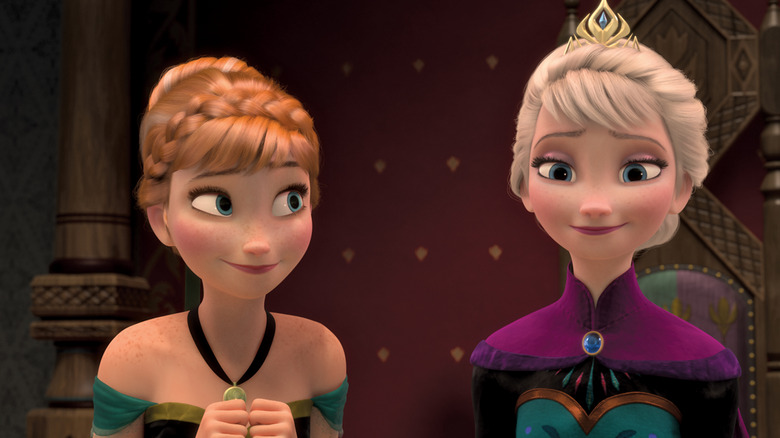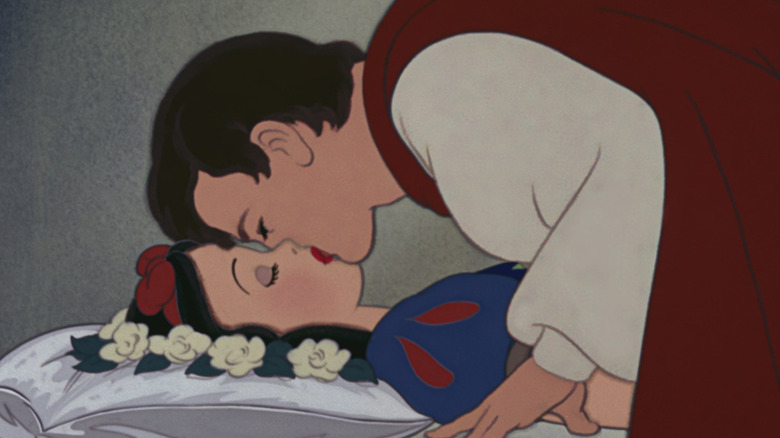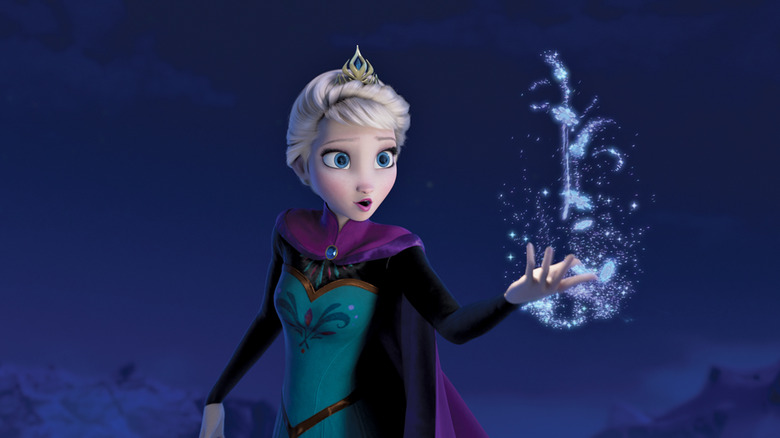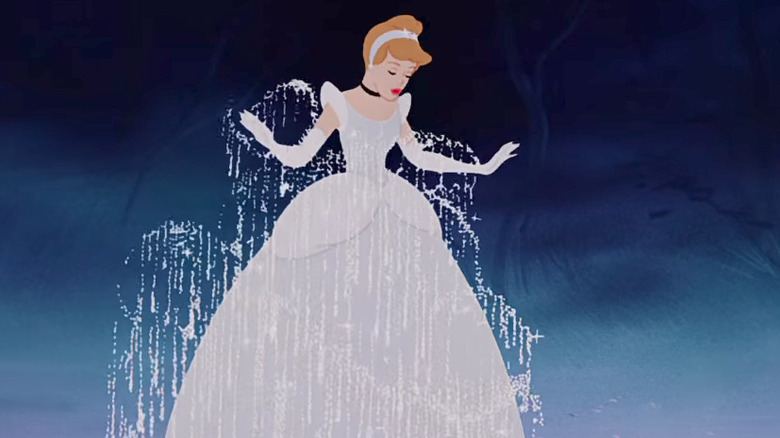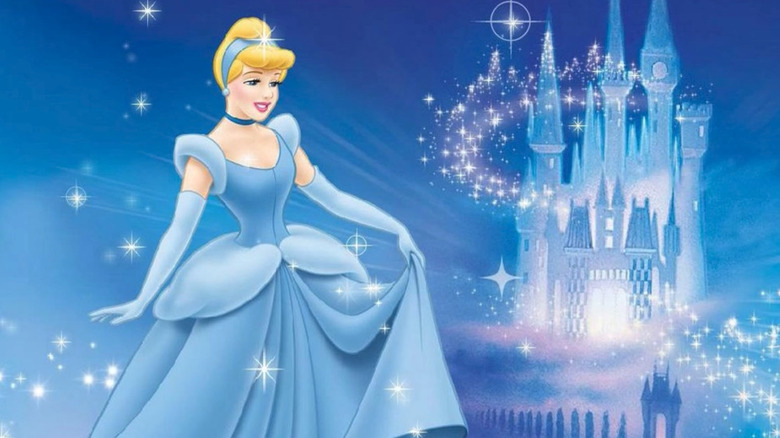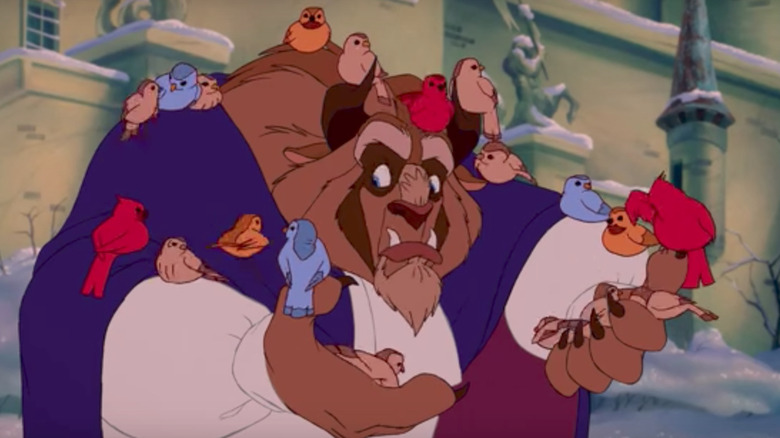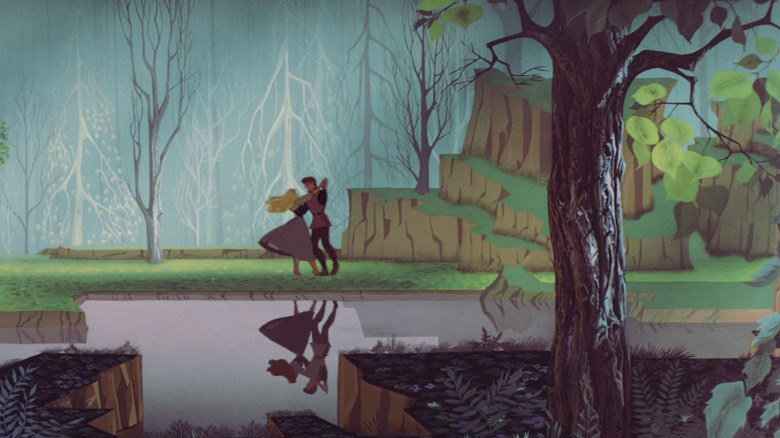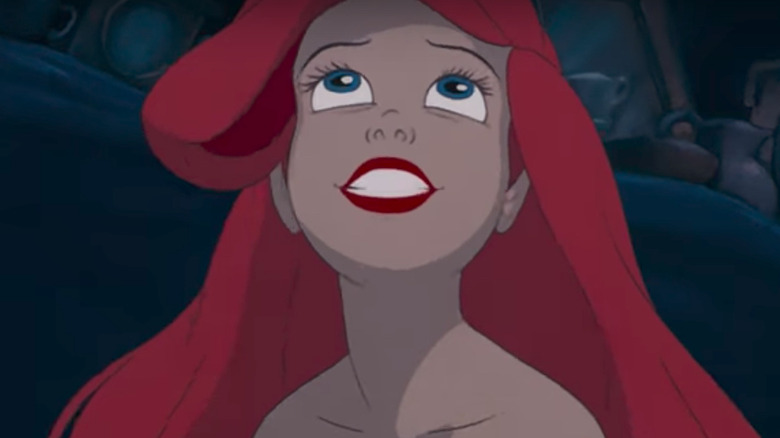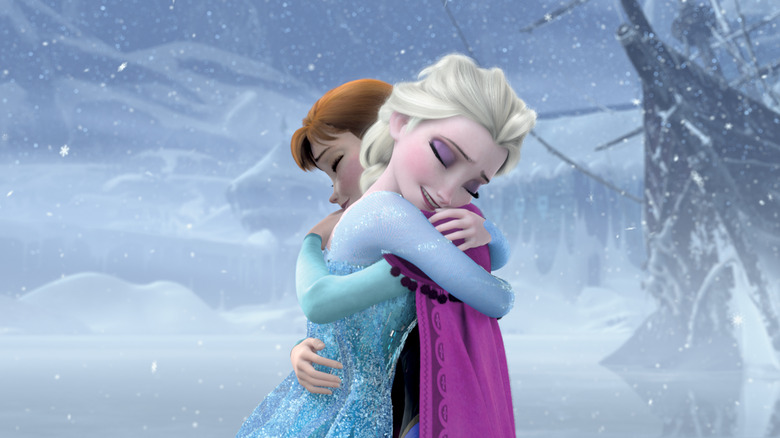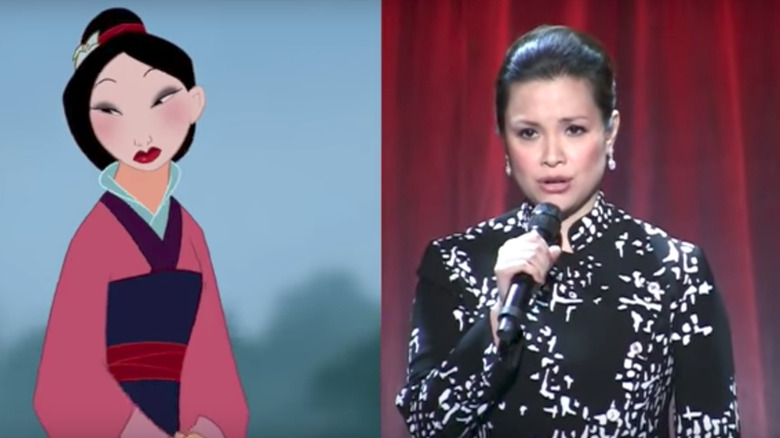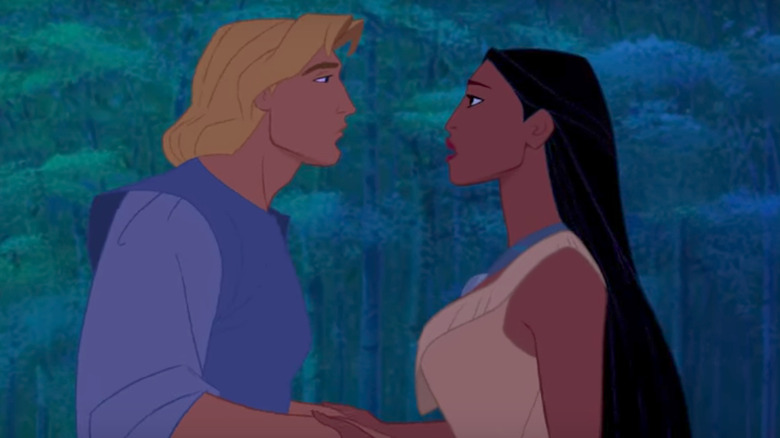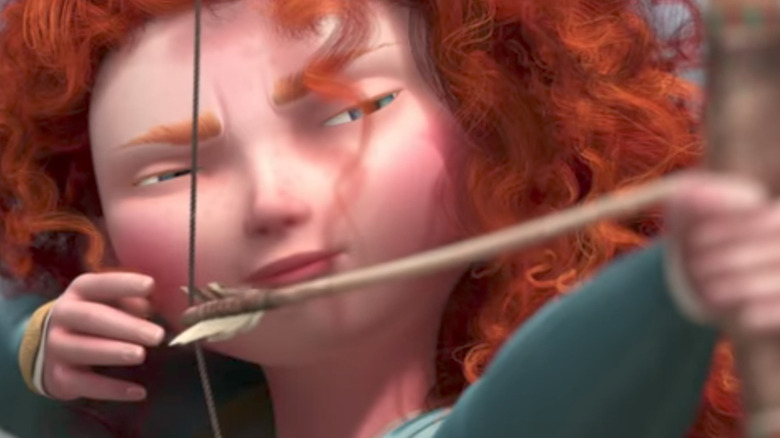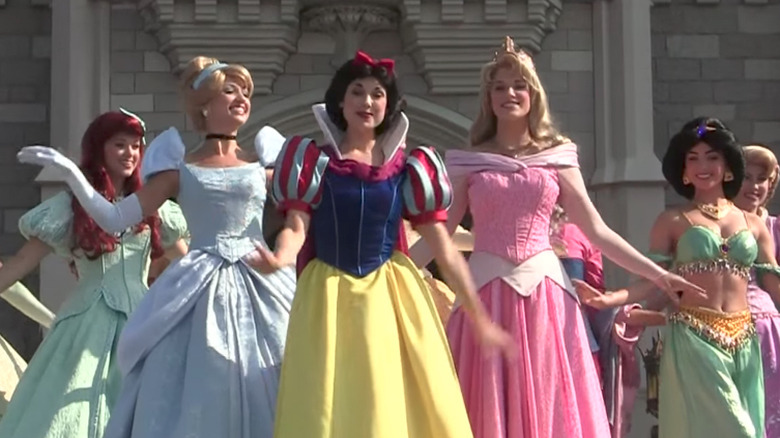Things Only Die-Hard Fans Know About Disney Princesses
Which Disney princess do you love the most? Many people have a favorite, whether it's Belle the bookworm, or Elsa the ice queen. But far fewer people know the hidden details of all that went into the creation of their favorite princess.
Have you ever wondered about the untold stories behind many of the Disney Princesses? Who were the actresses that created the voices we know so well? How did the princesses transform, to look the way they do now? I dug up some juicy tidbits about what went on behind the scenes, and I know I'll never look at these princesses in the same way again!
The actress who voiced Snow White made $970
Adriana Caselotti, the voice actress who played Snow White for the 1937 film, was 18 years old when she signed her contract with Disney. According to The New York Times, "As the company recounts it, the studio had been searching for a voice that was 'ageless, friendly, natural, and innocent' for Snow White, who would introduce the world to the song 'Someday My Prince Will Come.'"
Unfortunately, Caselotti wasn't paid much to be Snow White, earning just $970 for three years of work. She told People, in a 1987 interview, "I was getting $20 for every day I worked, and most of that went to help my mother. Then right before we finished, someone told me that the actors who did the voices of the dwarves were being paid $150 per day. I was very hurt."
Even though her payment was unfairly low, part of the reason may have been that Snow White was made during the Great Depression, and Disney Studios almost couldn't finish the film. As Caselotti shared in her interview with People, "After I started on the picture it took another year before they called me back because they ran out of money. They weren't going to have any Snow White at all."
Despite feeling slighted by Disney studios, Caselotti still felt a deep affinity for Snow White throughout her life, telling the magazine, "To me, Snow White is very special. I view her as my trust."
Elsa was originally based on Amy Winehouse
I've been to Disney World four times since Frozen came out. And of all of the princess outfits, Elsa's blue dress is by far the most popular with the little girls.
It would shock those mini Elsas to learn that in the original concept for the character, her hair was blue as well. Claire Keane, one of the artists tasked with creating the concept for Elsa, shared images of her designs on Tumblr, along with the caption, "Early exploratory drawings of Elsa inspired by Amy Winehouse's pathos. I imagined her to have a deep, soulful voice and dramatic mood swings."
Obviously, Elsa later morphed into the blonde beauty admired by thousands of little girls, but she kept her soulful voice and mood swings. You can see more of Keane's Frozen developmental sketches on her website, including many of her interacting with her sister Anna. Keane also worked as an animator for the film Tangled, and has since illustrated a children's book featuring Rapunzel's wild hair.
Walt Disney's favorite scene
Many girls love the scene in which Cinderella's dress transforms from a ripped pink dress she sewed herself, into a glamorous white gown made by her Fairy Godmother. Who doesn't want to be instantly transformed from mundane to magnificent?
But did you know that this scene was Walt Disney's favorite, as well? Research manager, Fox Carney, of Walt Disney's Animation Research Library, told Glamour, "One of Walt Disney's favorite scenes...was the transformation of Cinderella, and her dress transformation. Not because it was the great animation, not because it was the perfect scene — it was the notion of being able to transform that was very appealing."
According to the Los Angeles Times, a woman was visiting Disney's studio when she asked, "'Mr. Disney, with all the work that's been done at your studio, what is your favorite piece of animation?' He responded, 'I guess it would have to be where Cinderella got her ball gown.'"
Marc Davis, the artist who animated the scene, shared how gratified he felt when he learned that it was Disney's favorite. "I was pleased when I heard that [that scene was his favorite], because you never got compliments directly from Walt," he said.
Cinderella saved Walt Disney
Can you imagine living in a world without Disney World, "Let it Go," or The Lion King? Me neither. Luckily, we don't have to, and it's all thanks to the success of Cinderella. When it came out in the mid-1900s, Cinderella saved Disney Studios from closing up shop, according to the Los Angeles Times.
After World War II, Disney struggled to attract large audiences to his films, Pinocchio, Fantasia, and Bambi. He owed millions of dollars to Bank of America, and knew he needed to do something to change the situation.
Cinderella was his solution. In order to finish the film on a tight schedule and with a limited budget, Disney filmed the movie in live action, and then the animators worked off the footage. This creative solution, along with the irresistible magic of the film, kept Disney in business. The Los Angeles Times also reported, "The film had cost only $2 million — less than Pinocchio, or Fantasia — and grossed more than $4 million on its initial release."
The moment Belle fell in love with the Beast
Beauty and the Beast differs from many other Disney movies in that the love story doesn't begin with instant attraction or love at first sight. Instead, Belle falls in love with the Beast little by little, until she finally turns him into a prince by kissing him at the end.
Have you ever wondered about the exact moment Belle realized she was in love with the Beast? Paige O'Hara, the voice actress who played Belle in the animated classic, dished the details with Bustle, saying, "[Beast is] very frustrated, so [Belle] puts the seeds in his hands and the little birds come. The moment he sees that and smiles, the vulnerability comes through of the Beast. And that's the moment she falls in love with him. It's why she runs behind the tree. It's like, 'Oh my god, I'm falling in love with this beast!'"
The Beast seemed to feel it, too. When she hid behind the tree, he sang, "She's never looked at me that way before."
Sleeping Beauty cost $6 million, over six years
Sleeping Beauty took six years to make, cost $6 million, and fell flat at the box office, only grossing $5.3 million in its initial release.
The film cost so much to make because Disney wanted it to stand out from Snow White and Cinderella. In a video from Walt Disney Animation Studios about the making of Sleeping Beauty, film historian, Leonard Maltin, said, "Walt took this on as a special challenge. He wanted to make this film as special and as different as he could. He wanted to make a film that he felt would be the pinnacle of achievement in animation."
Unfortunately, audiences and critics weren't ready for such an innovative approach. Scott MacQueen, who restored Sleeping Beauty in 1997, told the Los Angeles Times, "There wasn't quite the market for fairy tales at that time than there previously had been." He added, "People who are in love with the old style, that whole European fluid-color look of the early features, sometimes reject it because of its hard geometry and its bright color. But it uses that very graphic style brilliantly."
After he made Sleeping Beauty in 1959, Disney steered clear of films about princesses for 30 years, until the release of The Little Mermaid in 1989. By that time, audiences were more than ready for fairy tales again.
The Little Mermaid was almost passed over
In 1989, The Little Mermaid launched Disney Studios back into the spotlight, earning the Oscar for best original song. Richard Corliss wrote in TIME, "More than two decades after Walt Disney's death, and following a series of less-than-fabulous cartoon features, this was the picture that launched the Disney Renaissance that soared with Beauty and the Beast, Aladdin, and The Lion King."
It may surprise you, however, to learn that the idea was almost passed over in favor of a Splash sequel. In an interview with Variety, Ron Clements recounted how he came up with the idea for the movie after reading the fairy tale in a Hans Christian Anderson book. He wrote a two-page treatment (in which the only character with a name was Ariel), and brought it to the "Gong Show," a practice Michael Eisner had brought over from Paramount Studios where they "gonged" rejected ideas. Clements recalled, "I had never read [the story] before and it seemed like it had a lot of potential. I wrote a basic two-page outline, but when we reconvened in the gong show, it was gonged."
Clements explained in Variety that it was partly because Disney was working on a sequel to Splash, that would never be released. Luckily, Clements says, "Two days later, they'd read my treatment and liked it. They called me back and said, 'We actually think there's something to this and we want to develop it.'"
The voice actresses are friends in real life
Any time you see a picture of Disney Princesses all standing together, you'll notice they never look at each other. That's because Disney wants to keep their mythologies separate. But in real life, many of the voice actresses of animated princesses are actually friends. In an interview with M Magazine, Linda Larkin, the actress who played Jasmine in Aladdin, shared details about their friendships.
When asked, "Are you friends with any other Disney Princesses?" she responded, "Yeah, I know Lea Solanga (who sang for Jasmine and Mulan). We don't work together, but we've gotten to do a lot of press events for the movie. And with Paige O'Hara (Belle), Jody Benson (Ariel). Paige O'Hara...she's become really dear to me. And I know Anika Noni Rose (Tiana from The Princess and the Pea) because we do these things together. Each of us have had a very unique experience that we can relate to with each other."
I don't know about you, but I would love to see a movie where Jasmine, Mulan, Belle, Ariel, and Tiana hang out!
The singer for Jasmine recorded an album at age 10
Lea Solanga, the woman who sang for Jasmine and Mulan, was only 20 years old — and performing in Miss Saigon in London — when she landed the singing role for Jasmine in Aladdin. That may seem young, but at that point, Solanga had already been singing for 17 years. She got her start at age three, in the Philippines, telling ABC Radio Melbourne, "My mum remembers me getting up on the living room table with a pretend microphone — the plug of a lamp — and just singing as if it was my own private little concert stage."
By age ten, Solanga had recorded her first album, and at 18, she went to London to be in Miss Saigon. According to Solanga, she didn't know very much about Disney when the casting director reached out to her to audition for Jasmine. She said in the radio interview, "I was just wondering, what is this Disney thing that everyone seems to be talking about very quietly in the hallway. But then I got a note from the casting director and he said, 'We've been looking for you, can you please get in with touch with me?'"
In February 2014, Solanga introduced her daughter, Nichole Chien, to a warm crowd at PICC Plenary Hall to sing "Yesterday's Dream." Amidst loud cheers, Chien smiled shyly behind the microphone. It looks like she's already following her in mom's footsteps.
The real Pocahontas had a much sadder ending
Pocahontas ended with John Smith sailing away in a ship while she waved from a clifftop. Since most Disney Princess stories end with "happily ever after," this ending feels melancholy at best. Unfortunately, her real-life story had an even more tragic ending, and it didn't involve John Smith at all.
John Smith and Pocahontas did know each other in real life. However, they never fell in love, as Pocahontas — whose real name was actually Matoaka, according to the National Parks Service (NPS) — was about 11 years old when Smith came to Virginia in 1607. Historians debate whether Pocahontas actually saved Smith from being killed after her uncle, Opechancanough, kidnapped him and brought him in front of her father, Chief Powhatan.
Historians do agree, however, that their relationship was not romantic, as reported by the NPS. In fact, he and the other Englishmen began fighting with the Powhatan over food, and Pocahontas saved his life again when her father plotted to kill him in 1609. When he left Virginia due to a gunpowder wound, they assumed that he had died.
The NPS reports Pocahontas's story took a sad turn soon after, when English Captain Samuel Argall, kidnapped her and brought her to Jamestown in 1613. The next year, she married a widower named John Rolfe. Three years later, she died at the age of 21 after falling ill on her return trip to Virginia.
Merida's makeover inspired a petition against it
Merida, the heroine of Brave, is one of the only "real" looking Disney Princesses. She has a head of huge, pouf-y orange hair, and a (relatively) normal body. Instead of looking to a man to rescue her, she solves her own problems and emerges as a true heroine.
That's why, when Disney tried to give Merida a makeover, it inspired a Change.org petition called "Say No to the Merida Makeover and Keep Our Hero Brave!" The petition read, "The redesign of Merida...does a tremendous disservice to the millions of children for whom Merida is an empowering role model. By making her skinnier, sexier, and more mature in appearance, you are sending a message to girls that the original, realistic, teenage-appearing version of Merida is inferior; that for girls and women to have value — to be recognized as true princesses — they must conform to a narrow definition of beauty."
According to The Guardian, Disney issued this statement in response to the petition. "The artwork used on Merida's official social media sites has always been the imagery from the movie," it read. "We routinely use different art styles with our characters and this rendition of Merida in her party dress was a special one-time effort to commemorate her coronation." Indeed, if you go to the section of Disney's website dedicated to Merida, you will see she's back to her original appearance.
Their stories are unforgettable
The Disney Princesses are unforgettable. No matter how young I was when I first saw them on the screen, their stories remain etched into my mind, even into adulthood — and I'm sure you feel the same.
Whether you love Belle's bookish kindness, or Merida's fiery personality, there's no denying the magnetism of the Disney Princesses. They've inspired generations of little girls to dream big and ignite their imaginations, and they'll keep doing that long into the future.
